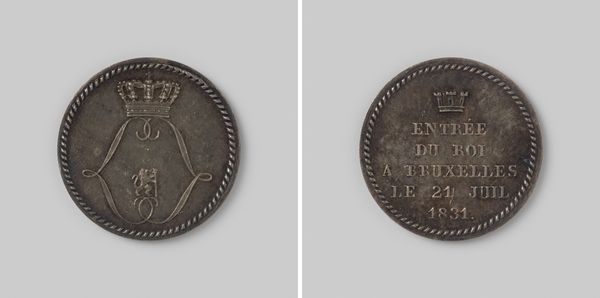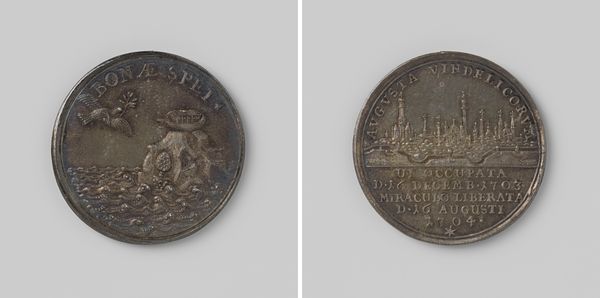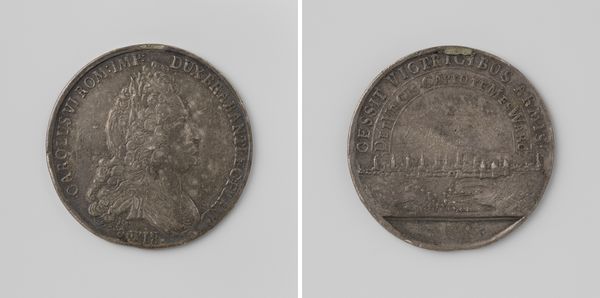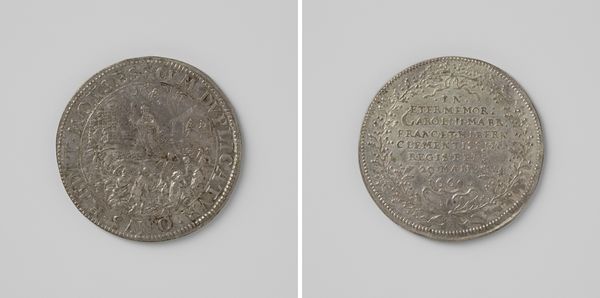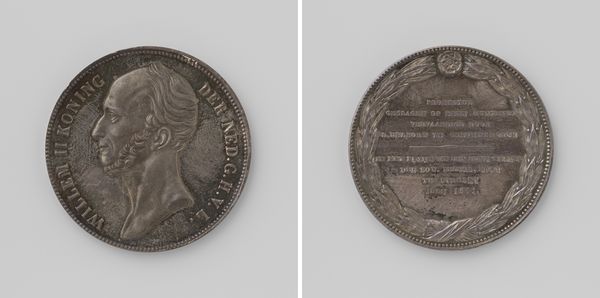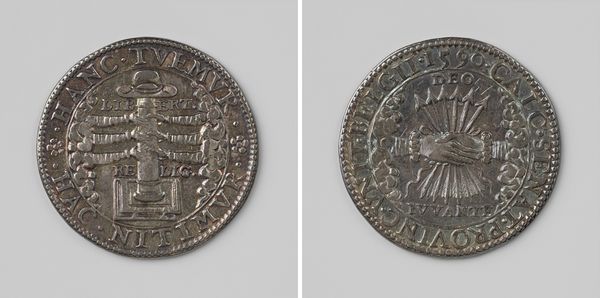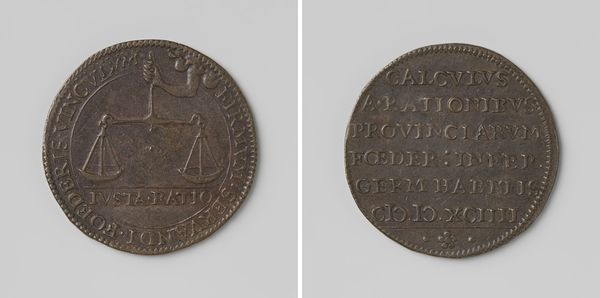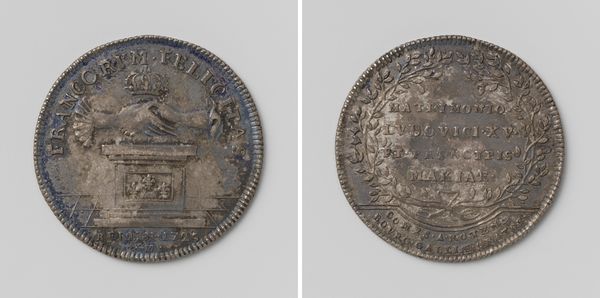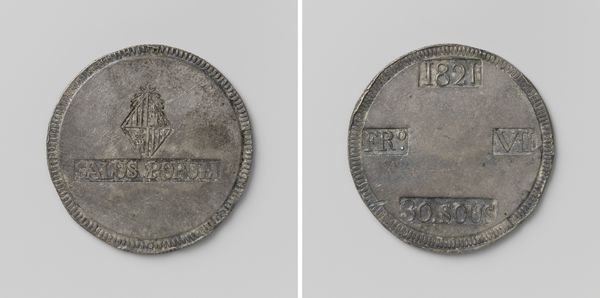
print, metal, engraving
#
portrait
#
baroque
# print
#
metal
#
sculpture
#
engraving
#
statue
Dimensions: diameter 3.8 cm, weight 19.92 gr
Copyright: Rijks Museum: Open Domain
Editor: Here we have an engraving on metal called "Handhaving van de munt te Harderwijk," created in 1723. It looks like a coin, actually. It feels so official and rigid. I'm curious, what stands out to you when you see this piece? Curator: Well, consider what a coin *is*: a powerful symbol of authority. This isn't just money; it’s a declaration. Harderwijk was a city in the province of Gelderland and this coin was struck to show the cities autonomy. This medal reinforced local identity and legal integrity in an age of shifting political sands. It also made their currency valid as they were a certified Dutch minter, so the people who were spending the coins were protected. Notice how Justice and the Coat of Arms of Gelderland take prominence in the design? Editor: So, the visual elements underscore political and social standing. But was minting something available to most at that time? Curator: Absolutely not. The authority to mint was a sign of sovereignty. The visuals also serve as propaganda, in that it projects an image of stable governance, regardless of the daily realities. Do you notice anything about the lettering? Editor: It's very formal and takes up a lot of the coin's real estate. Were literacy rates high enough for most people to understand it? Curator: The average person probably couldn't read the Latin, but literacy wasn't necessarily the point. Coins circulated widely, they also represented abstract ideas that connected Gelderland’s citizens with these core societal values. It would remind them that they live in a protected society, despite not even being able to fully understand the language. It's a powerful demonstration of symbolic authority, wouldn't you say? Editor: I see that. Looking at it that way, the coin tells a broader story. Thanks, that was fascinating.
Comments
No comments
Be the first to comment and join the conversation on the ultimate creative platform.


